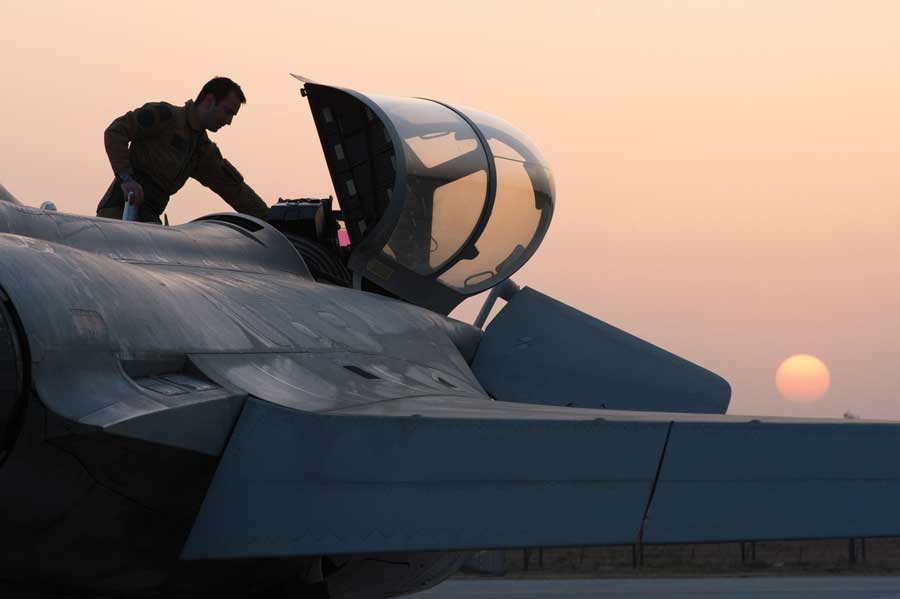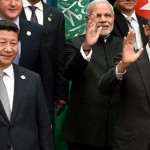IDR Blog
The Holy Grail of Indian Judiciary

In delivering the judgement yesterday on the Rafael deal, the Supreme Court has decided not to stir muddy political waters further, but has given benefit of doubt to the government and IAF officers, who were called by the court to depose in an unprecedented manner. It has also made a distinction between tenders for defence deals and non defence tenders like construction work and buildings by relying heavily on the reasoning of Graham Adous and John Alder who wrote in their book ‘Application of Judicial Review, Law and Practice’ that ‘ courts regard themselves as ‘ incompetent to investigate matters involving national security except examining whether the government claim is bonfide’.
The court in its 28 page order has dwelt with three alleged irregularities by the petitioners viz : Tendering and Decision making process, Pricing Issues and Irregularity in Offset Partnership .
Referring to Jagdish Mandal Vs State of Orissa judgement, the court asserts that tender forms are not open to judicial review, unless they are tailor made to benefit any particular tenderer. Quite clearly the tender for a Multi Role Medium Aircraft does not suffer from this infirmity as there were two technically shortlisted aircrafts after extensive technical trials. Further, a tender scrutiny by the court is limited by Wednesbury principle of reasonableness, absence of malafide or favouritism. The Wednesbury principle was evolved by the court in the case APCH Ltd Vs Wednesbury Corporation (1948) as one where the administrative law is ‘ so unreasonable that no reasonable authority could have decided that way.’ It’s like a ludicrous admistrative law which says,I f you have red hair, you can not apply for a job!. The Supreme Court seems to aver that tendering process in defence, being a security segment, is a non justice able area, with very limited scope for judicial review. A dispassionate study of the Rafael deal also seem to suggest that it does not offend the Wednesbury principle.
The Supreme Court however had a more difficult terrain to traverse on the reasonability aspect of the decision making process. It merely notes the clarification given by the government and the IAF officers that the decision making process is fair, except for ‘ minor deviations in the process’. This is indeed a contentitious issue where the court should have gone in to the merits as it did in its verdict on 2G and Coal block allocation issues, where it cancelled the contracts, by indicting favouritism.
What is most disappointing is its studied refusal to look in to the allegation why a letter of comfort was taken from Government of France instead of a Sovereign Guarantee, which would have lent greater accountability to the execution of the contract. It has also not responded to the charge as to why Para 8 of the offset provision was amended with retrospective effect to give legitimacy to the offset partnership with Ms Reliance Defence .This is the major needle of suspicion of an alleged complicity in corruption.
It is true that Rafael was free to choose it’s offset partner. This was a significant policy departure made by the MoD, which used to patronise the captive public sector with all its orders, by excluding the private sector players. This was part of the liberalisation policy which came in 2001, to MoD, permitting full participation of the private sector, and 25 % FDI in the defence sector.
The offset policy however mandated that the partner must have substantial capability in defence manufacturing and the OEM must declare the details of its partner. This claim is then verified by a Technical Evaluation Committee in about 8 weeks to ensure that the partner’s proposal is in conformity with offset guidelines. These guidelines stipulate that the OEM through the Indian partner will bring in FDI, Technology Transfer, manufacturing and export orders. In the present contract,50% of the order is to be discharged as offset, which was expected to significantly bolster indigenous military manufacturing capability and generate large employment opportunities. The offset provision was included to leverage our big ticket acquisition to gain access to critical defence technology, and ramp our Self reliance quotient which stands at 30% only.
It is well known that Reliance Defence was created in 2015, by taking over a naval ship yard project Pipav, and it has no experience in aero space manufacturing, unlike HAL which has built massive footprint since it’s baby steps as an overhauling outfit during the WWII. With manufacture of Mig aircrafts, SUKHOIs, LCA and ALHs to its credit, it was a natural choice to deliver the offset commitments envisaged in our DPP. If Make in India in Aero space sector is to be a reality, HAL has to be at the forefront, instead of a rookie like Reliance Defence without any manufacturing experience, unlike private sector entities like the Tata and L& T,who have a credible record in aerospace.
The critical Para 8 of offset guidelines in DPP stipulate verification of technical suitability .This has been amended by MoD with retrospective effect to ensure that the details of Reliance Defence can be verified later on. This is quite clearly indicative of favouritism shown to Reliance Defence, which is against the decision which the Court took in Tata Cellular Vs UOI case, frowning upon favouritism.
The Supreme Court surprisingly observes that ‘we do not find any substantial record to show that this is a case of commercial favouritism’. The Offset partner is yet to submit it’s proposal to the MoD!
The last issue that the court has tried to grapple with is the issue of comparative price. The court has noted that the price details have been shown to the CAG, which has been examined by the PAC. The official respondents have claimed that there is a commercial advantage in the purchase of 36 aircrafts. The court observes that it is not their job to carry out comparison of price details. This is certainly most astounding assertion, as the charge of a potential corruption is predicated on this. Mr Arun Shourie clarified in an interview yesterday that the price details are yet to be provided to the PAC. This leaves the issue of price comparison in a realm of conjecture The Court certainly should have thrown more light, instead adding heat to speculation. Its conclusion that ‘perception of individuals can not be the basis of a roving enquiry by the court ‘ appears to be misplaced as this case transcends individuals and party loyalty, and engages public attention at large to the charges of corruption that swathes defence deals.
From the Jeep Scandal when Krishna Menon was Defence Minister to Boffers under Rajiv Gandhi, the defence ministry has been like a holy cow, which nurtured sleazy deals under the cover of strategic sector. The Supreme Court has in this case has purposely limited it’s scope of judicial review under the shenanigan of national security. The concept of judicial review evolved from the judgement of Adams vs Malbury 1803, where CJ John Marshall struck down executive decision which was considered palpably arbitrary.A mandamus was issued as the executive decision conflicted with the spirit of the Constitution.
The Indian Supreme Court has been taking conflicting positions to adjudicate propriety of government decision making. While in 2G and Coal Allocation it has challenged the merit of the decision, for being preferential, in their tender awarding, in Rafael case, it has gone by the statement of the government and pronounced them to be bonfide, despite several grey areas like price, discharge of offset commitment and compliance of contract that remain unanswered. The spirit of judicial review seem to have been compromised at the altar of judicial reticence. Defence deals should not be the holy grail of Indian Supreme Court.




